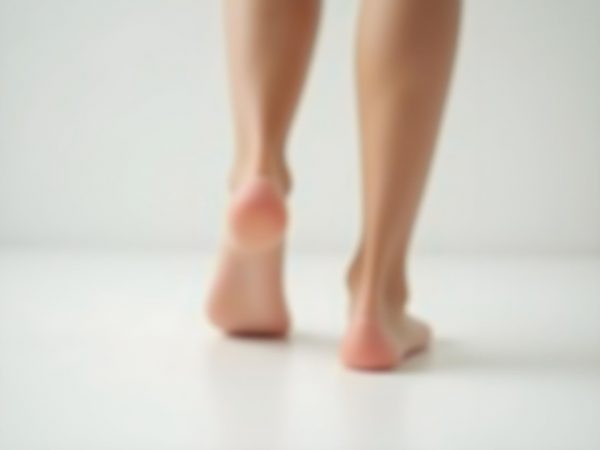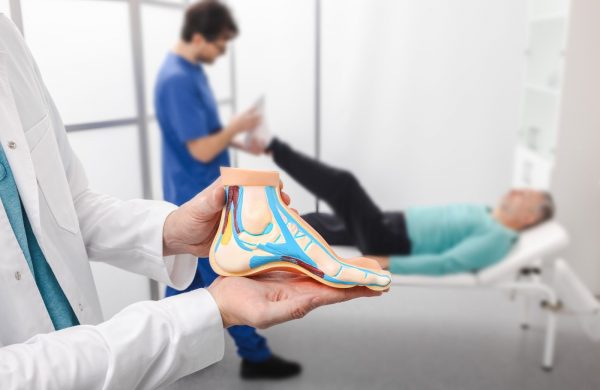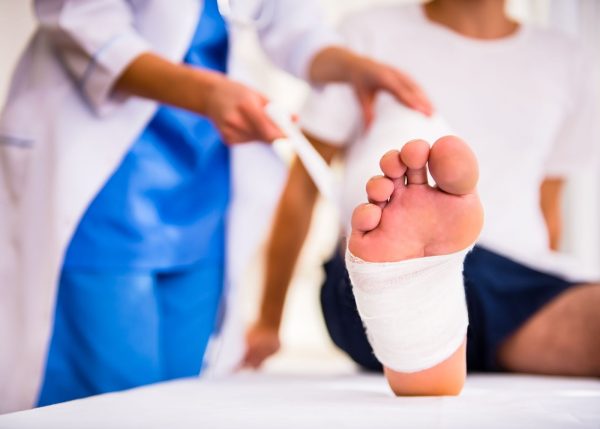If your feet feel like they’re constantly yelling at you with aches, sharp pains, or frequent ankle twists, you might be dealing with more than just weird arches. You could have Cavus Foot, a condition where the arches are unusually high and anything but harmless.
Also known as a cavus foot deformity, this condition is sneakier than it sounds. Many people don’t even realize they have high-arched feet until their heels hurt, their toes curl oddly, or they’re wobbling through life like they’re walking on a tightrope.
But here’s the good news: once you know what’s going on, there are real solutions. Whether you’re looking for relief or trying to avoid long-term high-arched foot issues, the right cavus foot treatment can make all the difference. Let’s break it all down.

What Causes Cavus Foot Deformity?
A cavus foot deformity isn’t just about having “unusual feet.” It often stems from deeper issues. In some cases, high arch feet are inherited, passed down from one or both parents. If your family has a history of foot pain or abnormal arches, your condition could be structural and genetic.
But there’s more beneath the surface. Underlying neurological conditions may also cause high arches. These affect how muscles in your feet and legs work together, often resulting in high-arched feet that become more pronounced over time.
That’s why it’s important not to ignore persistent discomfort. Sometimes, high arch feet symptoms are actually early warning signs of something more complex happening inside the body. Meeting with a podiatrist is a great first step to get clarity on your symptoms and get started with the right treatment.
High Arch Feet Symptoms to Watch For
Think high-arched feet are just a cosmetic quirk? Think again. High arch feet symptoms can range from annoying to downright disabling. We’re talking calluses, ankle instability, and foot pain that no amount of shoe inserts seems to fix. And the worst part? It’s often brushed off or misdiagnosed.
Here are the most common high-arched foot symptoms that could signal something more serious:
- Foot and ankle instability – A higher arch can throw off your balance and lead to frequent ankle sprains.
- Calluses and chronic pain – Pressure gets unevenly distributed, causing pain in the heel and ball of the foot.
- Difficulty fitting into shoes – People with high arch feet often struggle to find footwear that offers both comfort and support.
If these issues sound familiar, your high arch feet may be more than just an inherited trait, they may be calling out for attention and proper care.
High-Arched Foot Issues: Why Early Diagnosis Matters
Delaying treatment for cavus foot can lead to a cascade of complications. Because the arch is unusually elevated, your foot doesn’t absorb shock the way it should. This leads to long-term strain on the foot and ankle, even when doing simple daily activities.
People with high arch feet are at a higher risk of:
- Repetitive ankle sprains
- Stress fractures
- Tendon and ligament damage
Left untreated, a cavus foot deformity can also change your gait, affect posture, and increase wear on knees and hips. That’s why recognizing and addressing high arch feet issues early is the key to preventing further damage and preserving mobility.

How Cavus Foot Is Diagnosed
If you think you might have Cavus Foot, don’t self-diagnose based on arch height alone. A proper diagnosis starts with a physical exam and detailed patient history. Your podiatrist will ask about symptoms, family history, and any neurological signs you might be experiencing.

To confirm the presence and severity of a cavus foot deformity, your doctor may use imaging tools like X-rays or MRI scans. These help evaluate bone structure and detect any underlying causes.
It’s also important to differentiate Cavus Foot from other foot conditions like plantar fasciitis, tendonitis, or even flat feet in disguise. A precise diagnosis ensures the right cavus foot treatment plan, customized to your needs and your lifestyle.
Cavus Foot Treatment Options
If you’ve been living with high-arched foot symptoms, Cavus Foot treatment is available, and it doesn’t always mean surgery.
Conservative Treatments
For many patients, conservative options are highly effective:
- Custom orthotics provide targeted support to balance pressure across the foot.
- Ankle braces improve stability and reduce the risk of sprains.
- Physical therapy can help strengthen weakened muscles and improve gait.
These non-invasive approaches often bring relief.
Surgical Options
In severe cases where cavus foot deformity causes significant pain or functional problems, surgery may be recommended. Surgical options are designed to realign bones, correct muscle imbalances, and stabilize the foot. Your podiatrist will work closely with you to determine whether surgery is necessary based on your symptoms, mobility, and response to conservative care.

No matter the treatment path, the goal is the same: reduce pain, improve stability, and prevent future damage. The earlier Cavus Foot is diagnosed and managed, the better your long-term outlook.
Living With Cavus Foot: Daily Tips
Managing high arch feet doesn’t stop at the doctor’s office. Your daily habits can make a big difference in comfort and quality of life.
Footwear Tips for High-Arched Feet
- Look for shoes with extra arch support and deep heel cups.
- Avoid thin-soled shoes or high heels that can worsen symptoms.
- Orthopedic or custom-fit shoes are often best for managing high arch feet issues.
How to Reduce Pressure and Pain at Home
- Use gel pads or orthotic inserts to distribute pressure more evenly.
- Ice sore areas to relieve inflammation after long periods on your feet.
- Elevate your legs when resting to reduce swelling and fatigue.

Don’t Ignore Cavus Foot Symptoms
When to Seek Professional Help
If you’ve been brushing off foot pain, recurring ankle sprains, or poor balance as “normal,” it’s time to look deeper. Your condition can quietly worsen over time if left untreated.
Our team can evaluate your cavus foot deformity and recommend the right treatment plan. The sooner you act, the more options you’ll have to stay active and pain-free.
Schedule an appointment today.
Categorized in: Blog
Comments are closed